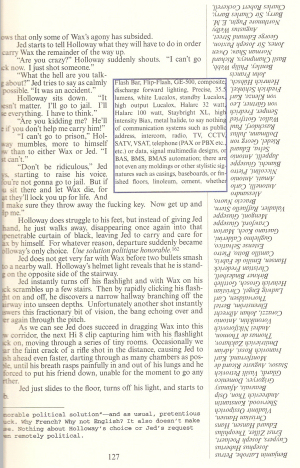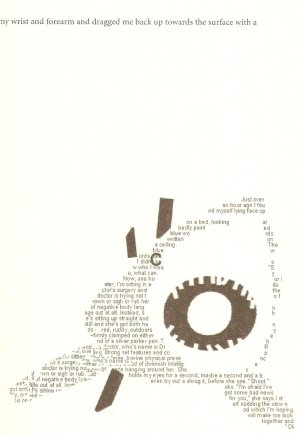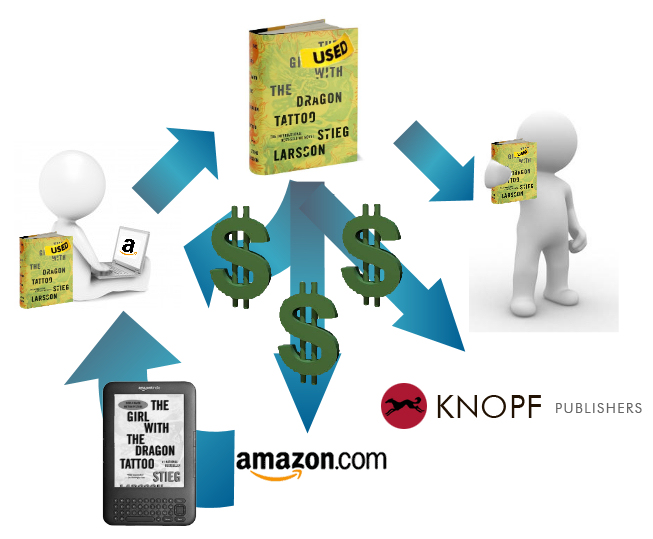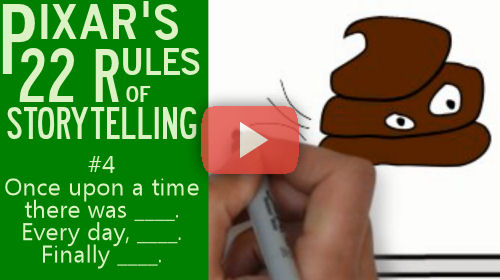The Coming (Staying?) of Metafiction…


Metafiction (see: “intertextual fiction”): self-referential fiction. A simple definition but one open to great possibilities. Think of the infinite mirror effect in that when two similar subjects are forced to reflect each other, self-commentary snowballs.
For me, the pull started with Jorge Louis Borges’s story, “The Garden of Forking Paths”:
“In all fictional works, each time a man is confronted with several alternatives, he chooses one and eliminates the others; in the fiction of the almost unfathomable Ts’ui Pen, he chooses – simultaneously – all of them. He creates, in this way, diverse futures, diverse times which themselves also proliferate and fork…No one realized that the book and the labyrinth were one and the same.”
Wow.
For Borges, character was secondary to plot, a tactic generally snubbed by the literateri as a convention of commercial(ized) fiction. But for Borges, the philosophical ideas were so strong that they became characters in and of themselves. The Library of Babel and The Circular Ruins (both appearing in stories of the same name) are far more interesting concepts than any character that may be dropped within them.
A few years after I discovered Borges, I happened upon Mark Z. Danielewski’s HOUSE OF LEAVES which takes the idea of Metafiction and mashes it against illustrative elements to create both a figurative and literal labyrinth with(in) the text. See this and try not to drool:

Then I found Steven Halls, THE RAW SHARK TEXTS which, while obviously influenced by HOUSE OF LEAVES, succeeds as a great story in its own right.

I bring up Metafiction for two reasons:
1) I think we are only beginning to see with Metafiction what will certainly become a much more popular style in the years to come. With desktop publishing at a point that anyone with a computer and a thumb can layout a book, and with other artistic mediums now being so easy to manipulate on-screen, the possibilities truly are endless to create mini-networks of self-referential “book objects.” And where there is ability, there will be a niche (then (un)fortunately a grocery store shelf) to fill.
2) What else is out there? I’m looking more for the book that manipulates the physical features of a book (more like HOUSE OF LEAVES rather than manipulates the concept (less like Borges’s work). Post a comment, guide me.



The conceptual variety is a lot easier to come by. America: The Book (The Daily Show) has some elements of both, as it masquerades as a textbook, using the same conventions and diagrams and appendices and whatnot. I wonder if such things are more prevalent in the comedy section.
The Age of Wire and String by Ben Marcus may feed your hunger. Of course it doesn’t literally take a shape, but it did hurt my head. You might be able to make heads or tails better than I could.
@Gordon: Good thinking. Even THE ULTIMATE NINJA HANDBOOK, which plays with footnotes in a way not usually used in a humor book is self-referential.
MetaNonfiction, maybe.
@Shawnsey: Thanks Shawnsey. I’ll check it out. I like Dalkey Archive (saw them at AWP in Chicago). Excerpts of THE AGE OF WIRE seem capable of just the sort of headache I need.